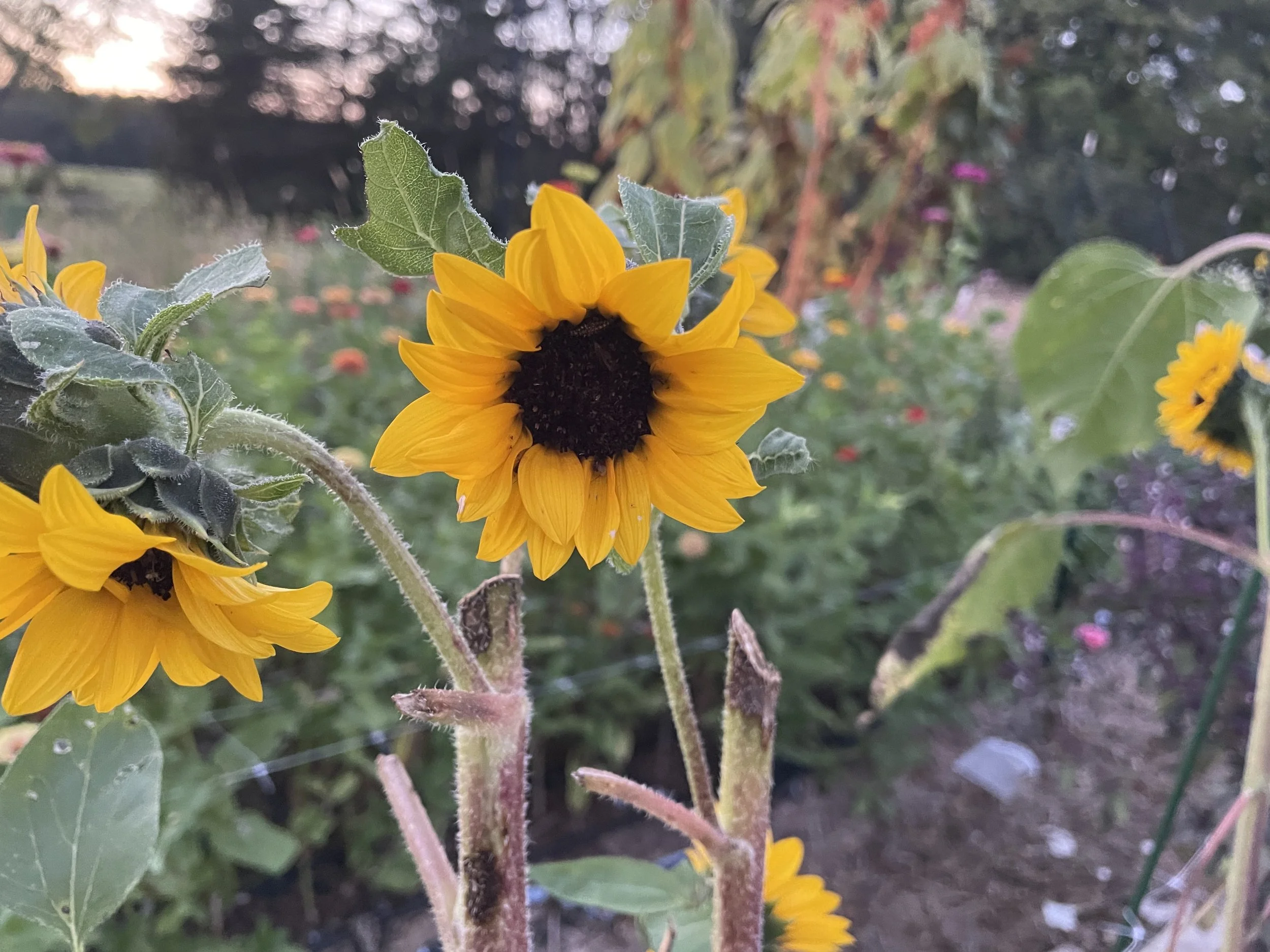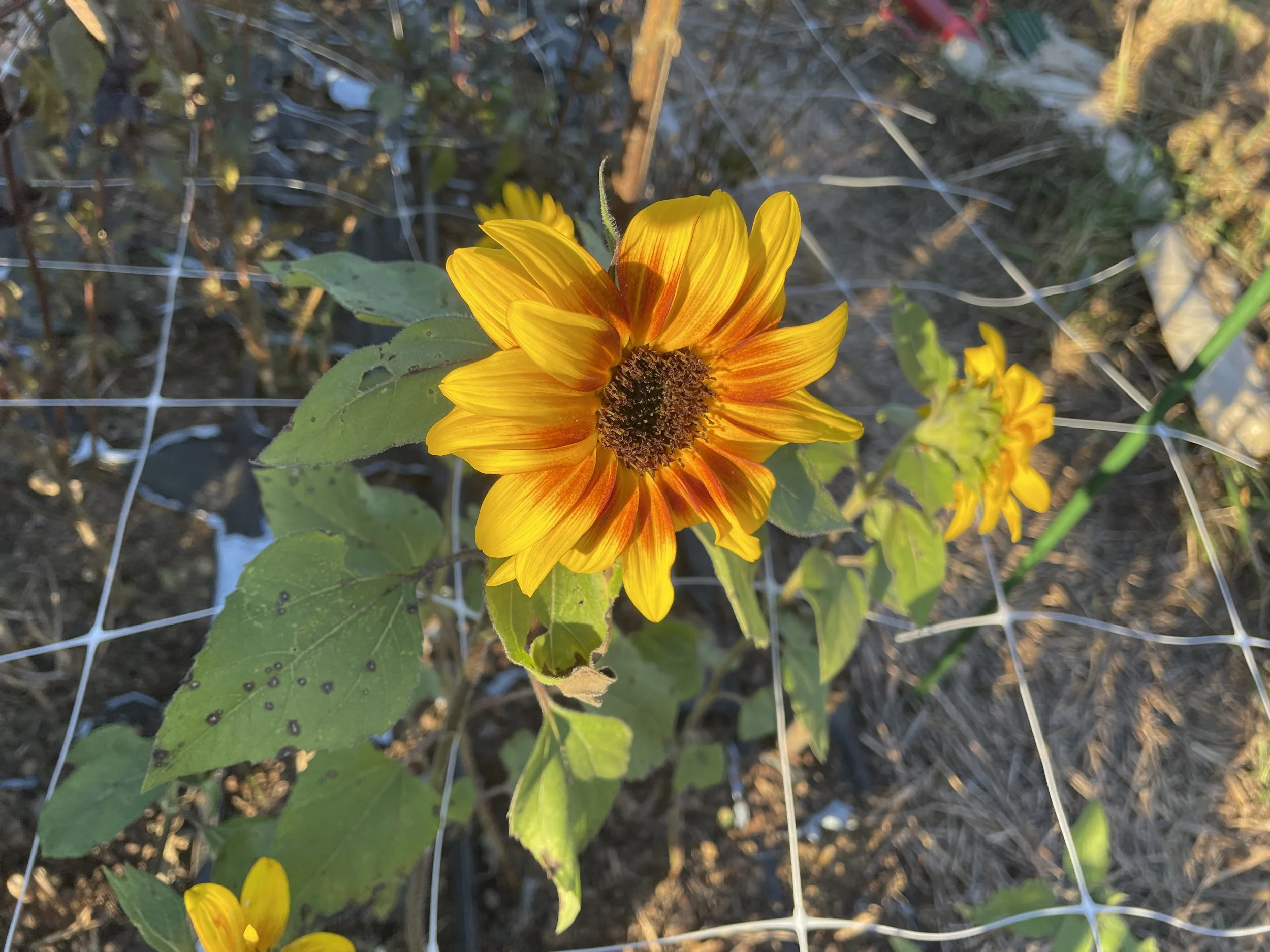Tucking the Garden In: Simple Fall Tasks That Bring Peace Into Your Home
Nearing the end of November, and the flower field has completely transformed. The air has a slight chill in it, but the warm sunshine makes up for it. There’s leaves scattered all around like confetti, and the constant buzz of the bees is now replaced with a still, calm quiet.
Standing out in the middle of our field, I can’t help but reflect of the seasonality of life. This season, Autumn, invites us to slow down; but it doesn’t have to mean completely clearing everything away.
It’s about creating space for rest, renewal, and life beneath the surface. We do this in our own homes and hearts this cozy time of year.
Our instinct tells us to get everything all cleaned up before winter, yet leaving the garden wild can have tremendous benefits for the soil and the wildlife around you!
As a mom of five, I’ve found that often the best course is to pause instead of perfect. Some of life’s greatest beauty is found in the imperfections.
The color change in all of the foliage, the dried grasses, and the brown seed heads are just a few of the imperfect sights that fall offers.
All of the hollow stems and leaf piles serve as essential winter shelter for tons of pollinators. The fall garden doesn’t need to be spotless, it needs to be alive. A tidy garden might look nice, but a living garden tells a story!
Quick (eco-friendly) tips for your fall garden cleanup:
Leave the seed heads for the birds and other beneficial insects to use for food and shelter. This also promotes self seeding for more plants in the spring!
Let the fallen leaves from plants and nearby trees rest in the garden beds. These will be a natural mulch as well as a home for pollinators over the winter.
Cut back selectively. For your perennial plants, you’ll want to prune back and mulch to protect from harsh winter conditions. For annual plants, try to leave as much sturdy stems standing as possible for the over wintering wildlife.
Compost gently with leaves, stems, and other garden waste to create organic matter for spring planting.
Working in the crisp fall air feels quite grounding. Clearing out what’s done, and keeping what still has purpose.
Healthy roots make for strong new growth. This is true of gardening and of us. For both, the best way to strengthen our roots is to enrich our surroundings. For the garden this is the soil.
Soil health is one of the most important aspects of a prolific garden. Naturally enriching your soil is the most beneficial way, all around. Here’s some key ways to do this in the fall:
Use cover crops that add nitrogen to the soil.
If possible, avoid tilling. It’s been proven beneficial, for keeping worms and microbial life, when the soil structure is left intact.
Adding compost or aged manure is the fastest and most efficient way to get a nice boost of nutrients.
Find peace this quiet season by continuing the beauty.
Before closing up the garden, cut some flowers and foliage to dry for arrangements to enjoy all fall and winter.
Adding bird feeders around the windows of your home can be a welcome invitation for birds and your family alike to enjoy some beauty in nature.
Get out your camera and take photos of all the messy beauty you see around the garden- frost on seed pods, or birds perched on the lingering old dried stems. Even when the flowers fade, the garden is still full of life. It’s just taking a well deserved rest.
As a gardener, and even as a mom, I have to learn to trust nature’s rhythms.
This means noting the importance of tending without overdoing it. Just like our families, gardens need both chaos and calm. The busy bloom of summer and the quiet of fall work together- one feeds the other.
Autumn isn’t the end of a garden’s story, it’s just the pause between chapters. We need to give nature her space to rest, so she can bloom again come spring.

